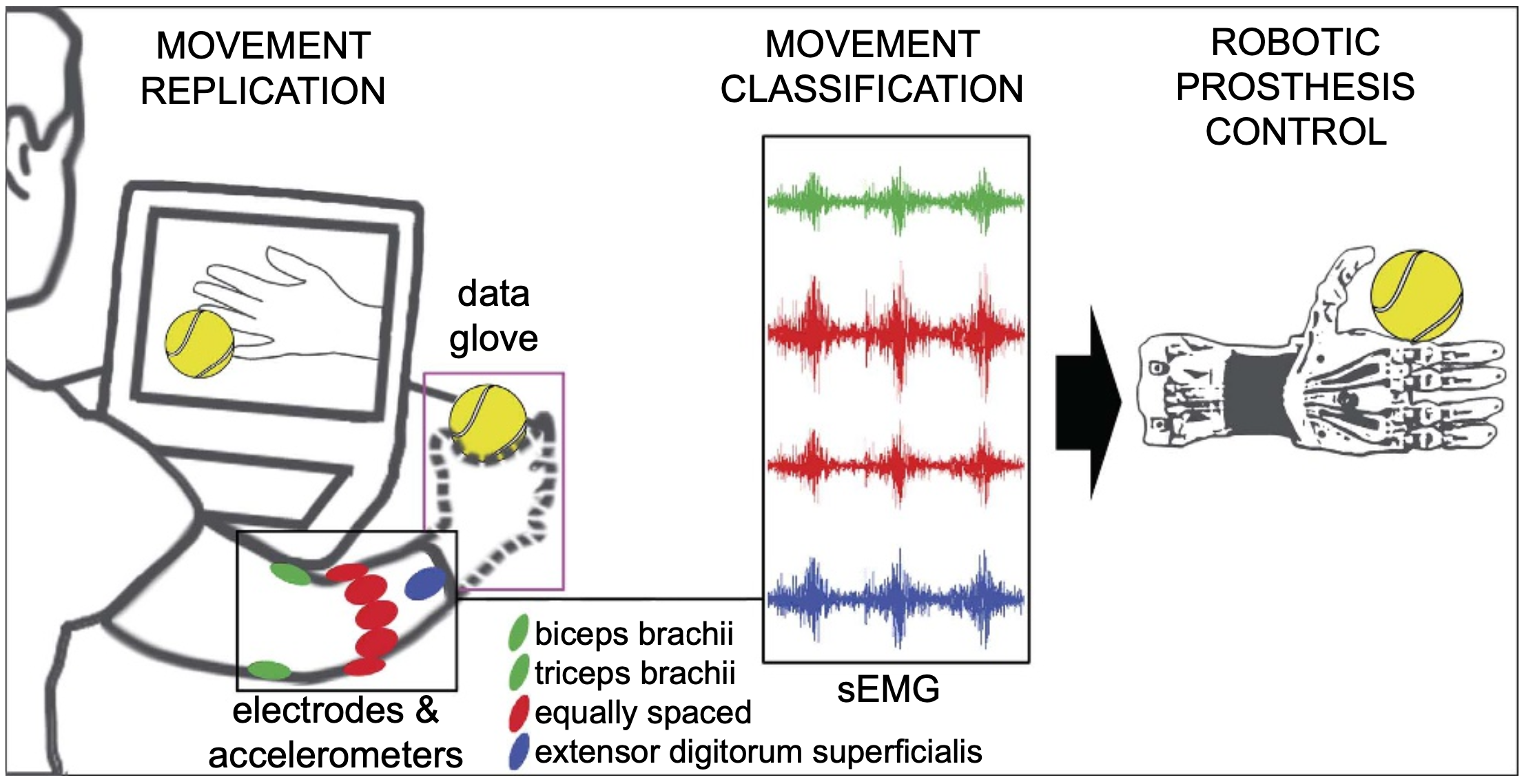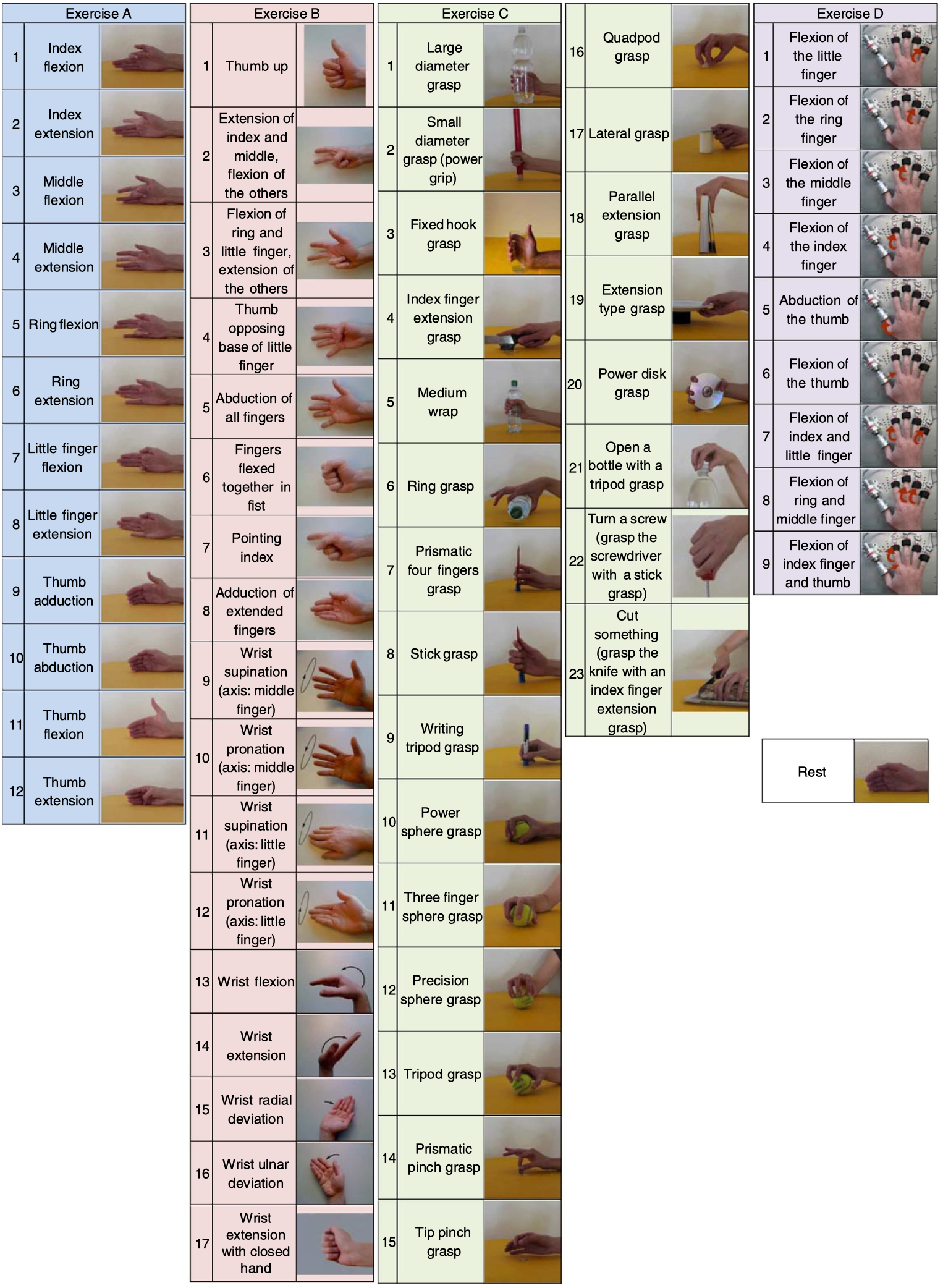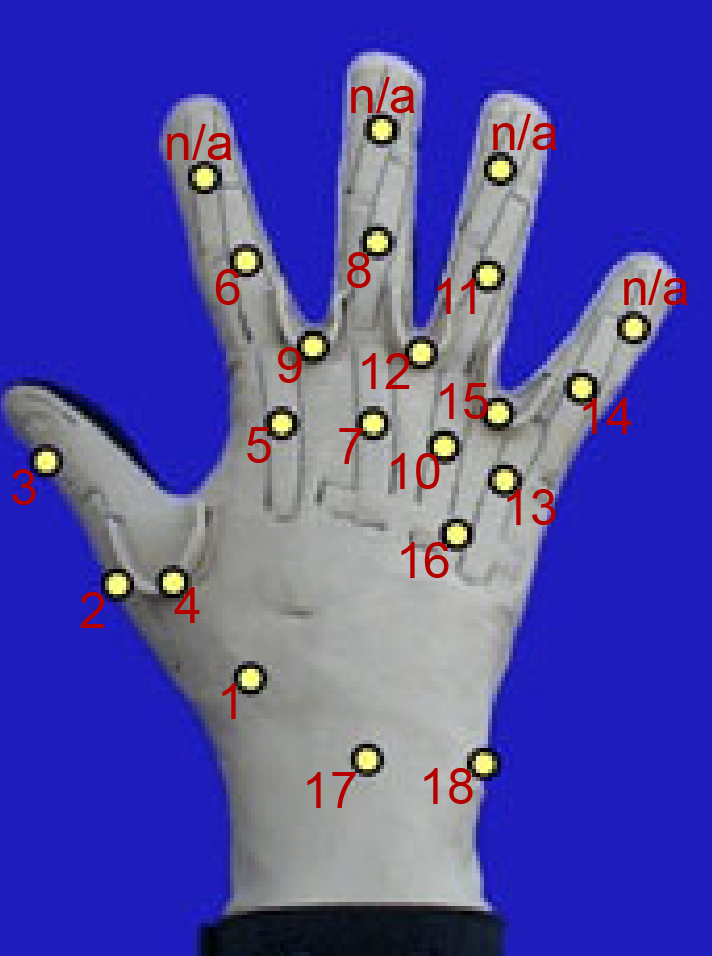DB7 Guidelines
Overview
This Ninapro dataset includes myoelectric and inertial measurements.
Publications
The dataset is described in detail in the following scientific paper.
Please, refer to it for detailed guidelines and cite it in case you use
this dataset.
Instructions
Subjects
20 intact subjects, 2 amputees.
Acquisition Setup
12 active double differential wireless electrodes from a Delsys Trigno IM
Wireless EMG system. The sensors comprise EMG electrodes and 9-axes
inertial measurement units (IMUs). The sensors are positioned as shown in
the figure: eight sensors are equally spaced around the forearm in
correspondence to the radio humeral joint; two sensors are placed on the
main activity spots of the flexor digitorum and of the extensor digitorum
as described in; two sensors are placed on the main activity spots of the
biceps and of the triceps. The sensors were fixed on the forearm using
their standard adhesive bands. Moreover, a hypoallergenic elastic
latex free band was placed around the sensors to keep them fixed during
the acquisition. The sEMG signals are sampled at a rate of 2 kHz.
The kinematic information is recorded with a dataglove (cyberglove 2,
18-DOF model).
Acquisition Protocol
The subjects have to repeat several movements represented by movies that
are shown on the screen of a computer monitor.
The experiment is divided in two exercises:
- Basic movements of the fingers and of the wrist.
- Grasping and functional movements.
During the acquisition, the subjects were asked to repeat the movements
with the right hand (phantom limb in the case of amputees). Each movement
repetition lasted 5 seconds and was followed by 3 seconds of rest. The
protocol includes 6 repetitions of 40 different movements (plus rest). One
of the amputee subjects (Subject 21) did not perform the final two
(functional) movements of Exercise 2; therefore, the number of classes
associated with this subject is 38.
Dataset variables
For each exercise, for each subject, the database contains one matlab file
with synchronized variables. The variables included in the matlab files
are:
- Subject: subject number.
- Exercise: exercise number.
- acc (36 columns): three-axes accelerometers of the 12 sensors.
- gyro (36 columns): three-axes gyroscopes of the 12 sensors.
- mag (36 columns): three-axes magnetometers of the 12 sensors
- Emg (12 columns): sEMG signal.
-
Glove (18 columns): uncalibrated signal from the sensors of the
cyberglove.
The cyberglove signal corresponds to data from the cyberglove
sensors located as shown in the following picture; "n/a" corresponds
to not available sensors, since an 18-DOF model was used. Prior to
each experiment, the data glove was calibrated to the specific
subject using the "quick calibration" procedure provided by the
manufacturer.
-
Stimulus (1 column): the movement repeated by the subject, according
to the displayed movie.
-
Restimulus (1 column): the movement repeated by the subject, but with
the duration of the movement label refined a-posteriori in order to
better correspond to the real movement.
- Repetition (1 column): repetition of the stimulus.
- Rerepetition (1 column): repetition of restimulus.

Acquisition procedure. The subjects are asked to mimic movies of movement
shown on the screen of the laptop. sEMG signal is recorded with 12
electrodes (the electrode on the flexor digitorum superficialis and part
of the equally spaced electrodes are not represented due to perspective
reasons).

Hand movements. Performed exercises: B, C.

Cyberglove sensors location.


